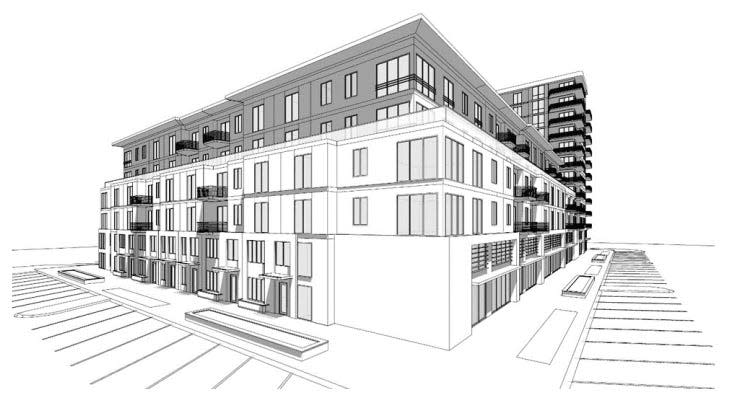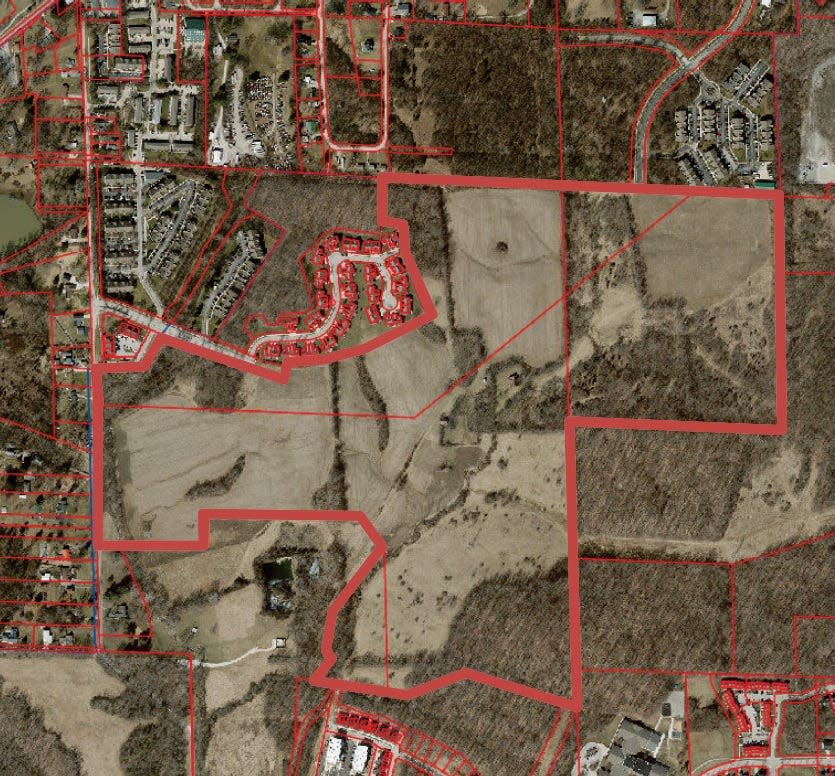Developer shrinks huge housing development plan; neighbors worry about traffic, flooding

Correction: This post has been updated to correct the development's density.
A planned 5,000-unit housing development in southwest Bloomington has elicited neighbors’ concerns about the environment, population density, traffic and flooding.
“This isn’t a housing tract. It’s a city,” Bloomington resident Mark Furnish told the Bloomington Plan Commission this week. Furnish lives on Weimer road, which abuts the planned development.
Two development partners from Carmel and Muncie bought the 139-acre property east of South Weimer Road and southwest of Catalent’s Bloomington campus in February for nearly $13.2 million. They plan to build about 5,000 housing units, ranging from single-family homes to condos, senior living facilities, hotels and apartment complexes with up to 12 stories. The new figure is 1,000 units less than originally announced. Developers have said they expect the project to be completed in about a decade — though the local planning director has called that timeline “aggressive.”

About 15% of the units are expected to be affordable, meaning for people who earn less than 120% of the area median income. The U.S. Department of Housing and Urban Development has set this year’s AMI for Bloomington at $94,700. If the affordable units were available today, they would go to families earning no more than $113,640.
On November ballot: What to know about MCCSC's new $9M referendum proposal
Each of the developers, The Ridge Group Development and Sullivan Development, plan to develop 10% of the acreage with the rest being sold to other companies specializing in hotels, senior living and other structures.
The Bloomington Plan Commission this week discussed the project for nearly three hours and then postponed any action until its Sept. 11 meeting, in part because too many questions remain unanswered. The ultimate decision will lie with the city council.
More than a dozen Bloomington residents addressed the commission this week, and many voiced concerns about the project’s impact on the environment, flooding, traffic on nearby roads and its scale compared to the nearby neighborhoods — a concern that local planners also have raised.
A plan commission member and a neighbor this week also expressed confusion about the meaning of the term “unit” and said greater clarity on the term — and how many people would occupy each unit — would make it easier to determine the project’s impact.
That lack of clarity also clouded other speakers’ concerns about the project’s density, which appeared to be too high for many neighbors.
If the 5,000 units were occupied by three people each, for example, the development would add 15,000 residents to the city of Bloomington — if all of those occupants were newcomers. The city’s population would grow by roughly 19%. It also would mean about 16% of the city’s population would live on 0.9% of the city’s land.
Furnish, the Weimer Road resident, said he wasn’t sure whether density was the answer to the city’s affordable housing problem, but even if it were, he said dense housing is not appropriate for every area. And, he said, this particular area is “rotten” for dense housing in part because of karst features and sinkholes.
Huge housing development proposed: Find out where.
Plan commission members said they appreciated the residents’ insights and the developers’ willingness to answer questions and meet with neighbors, but members still had many questions. Andrew Cibor, director of the city's engineering department, said much more information on the project, including its impact on traffic and the city’s water utility, was still forthcoming.
Boris Ladwig can be reached at bladwig@heraldt.com.
This article originally appeared on The Herald-Times: Bloomington residents concerned about 140-acre development

